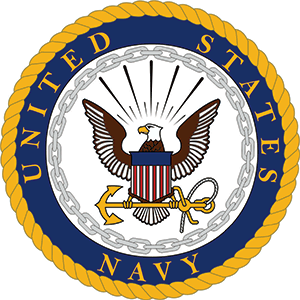 Four criteria will be used to determine whether tattoos/ body art/ brands are permitted for Navy personnel: content, location, size and cosmetic. (During the screening process, tattoos must be seen either in person or by sighting a photograph) The following has been extracted from NAVADMIN 082/16, CNRC N3 Operational Notice #43, and COMNAVCRUITCOMINST 1130.8K (CHG 1):
Four criteria will be used to determine whether tattoos/ body art/ brands are permitted for Navy personnel: content, location, size and cosmetic. (During the screening process, tattoos must be seen either in person or by sighting a photograph) The following has been extracted from NAVADMIN 082/16, CNRC N3 Operational Notice #43, and COMNAVCRUITCOMINST 1130.8K (CHG 1):
Content
Tattoos/body art/brands located anywhere on the body that are prejudicial to good order, discipline, and morale or are of a nature to bring discredit upon the naval service are prohibited. For example, tattoos/body art/brands that are obscene, sexually explicit, and/or advocate discrimination based on sex, race, religion, ethnic, or national origin are prohibited. In addition, tattoos/body art/brands that symbolize affiliation with gangs, supremacist or extremist groups, or advocate illegal drug use are prohibited.
Location
One tattoo will be authorized on the neck and shall not exceed one inch in dimension (height/width). The neck is defined as the area between the collar line of a crew neck T-shirt and the base of the jaw bone. Tattoos meeting these requirements are acceptable behind the ear. No tattoos are permitted on the head, face (to include ear) and scalp.
As of March 31, 2018, a single tattoo larger than one inch by one inch located on the neck which cannot be seen from the front can receive waiver consideration by the Commander, Navy Recruiting Command for enlistment. The tattoo must be on the back of neck, no higher than the base of the scalp (not extending into the hairline), and behind the ears.
Size
The size restriction for visible tattoos is limited to the area of the neck and behind the ear only. As a result of this change, leg and arm tattoos can be of any size. Tattoo on the neck or behind the ear will not exceed one inch in measurement in any dimension (height/width).
Cosmetic Tattoos
Cosmetic tattoos are authorized to correct medical conditions requiring such treatment. For the purpose of this regulation, cosmetic tattooing refers to medical or surgical procedures conducted by licensed, qualified medical personnel.
Mutilation
Intentional mutilation of any part of the body is prohibited. Mutilation is defined as the intentional radical alteration of the body, head, face or skin for the purpose of and or resulting in an abnormal appearance. Examples of mutilation include, but are not limited to a split of forked tongue; foreign objects inserted under the skin to create a design or pattern; enlarged or stretched holes in the ears (other than a normal piercing); intentional scarring on the neck, face or scalp; and intentional burns creating a design or pattern.
Dental Ornamentation
The use of gold, platinum, or other veneers or caps for purposes of dental ornamentation is prohibited. For purposes of this regulation, ornamentation is defined as decorative veneers or caps. Teeth, whether natural, capped, or veneered, will not be ornamented with designs, jewels, initials or other similar ornamentation.
Removal/Alteration of Tattoos/Body Art/Brands
Disqualified applicants who later have any tattoo/body art/brands professionally concealed or altered may request reconsideration for enlistment/commissioning eligibility determination.
Be advised, all applicants are warned not to obtain any new or additional tattoos/body art/brands while awaiting accession and that failure to comply with this warning could result in their discharge. While in the Delayed Entry Program, Future Sailors should not add any tattoos, body art, body piercings, etc. Future Sailors will be screened 30 days, and again 7 days before leaving for boot-camp to ensure no new tattoos, body art, or brands have been added since entering the Delayed Entry Program. Not only is there a chance for infection, but the tattoo, art, or piercing itself may very well disqualify you and lead to your discharge.
Source: https://www.navycs.com/blogs/2008/12/11/brands-tattoos-body-art